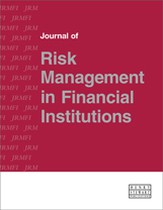Managing interest rate risk in the banking book using an optimisation framework
Abstract
The art of managing interest rate risk in the banking book is becoming topical again with the recent release of the Basel Consultative document as well as the banks’ need to generate interest income in a persistently low and flat interest rate environment. Interest rate risk in the banking book is traditionally managed by considering the tradeoff between short-term income volatility and the longer-term economic value of equity (EVE) volatility: the tradeoff between risk (of earnings and/or EVE decline due to adverse interest rate movement) and return (of net interest rate income and potential increase in EVE due to favourable interest rate movements). Although these are old and well-understood concepts, these risk vs return frameworks are at best implicit in many organisations, leaving room for suboptimisation. Another area of improvement is with respect to simplistic risk appetite frameworks, in many cases limited to sensitivity analysis (eg parallel shocks, etc), which can neither capture the true variety of interest rate movements nor be conceptualised. In this paper, we introduce a dynamic optimisation framework for explicitly managing interest rate risk and the return in the banking book. We also define the risk appetite in a manner that can be conceptualised and directly calibrated to an organisation’s risk preferences and tolerances.
The full article is available to subscribers to the journal.
Author's Biography
Bogie Ozdemir is a Vice President in Sun Life Financial Group. He is responsible for economic capital and is building out its capabilities for Solvency II/Own Risk and Solvency Assessment (ORSA) and model validation. Bogie was a Vice President in the BMO Financial Group responsible for economic capital, stress testing and Basel analytics, and jointly responsible for the Internal Capital Adequacy Assessment Process (ICAAP). Previously he was a Vice President in S&P’s Risk Solutions, globally responsible for engineering and implementing new solutions and business development. He has co-authored various papers and a book on Basel II implementation.
Gokul Sudarsana is currently Director, ORSA and Internal Models at Sun Life Financial. He is responsible for economic capital modeling and producing the Own Risk & Solvency Assessment (ORSA), an annual, Board-approved process that integrates risk management with capital and strategic planning. Additionally, Gokul leads the research and development of advanced capital modeling techniques, as well as the identification and advocacy of Global Risk Strategies identified through ORSA. Gokul graduated from the University of Waterloo with a Bachelor of Mathematics in Actuarial Science. He is a Fellow of the Society of Actuaries and Canadian Institute of Actuaries, as well as Chartered Enterprise Risk Analyst.
Citation
Ozdemir, Bogie and Sudarsana, Gokul (2016, October 1). Managing interest rate risk in the banking book using an optimisation framework. In the Journal of Risk Management in Financial Institutions, Volume 9, Issue 4. https://doi.org/10.69554/URBN4951.Publications LLP
